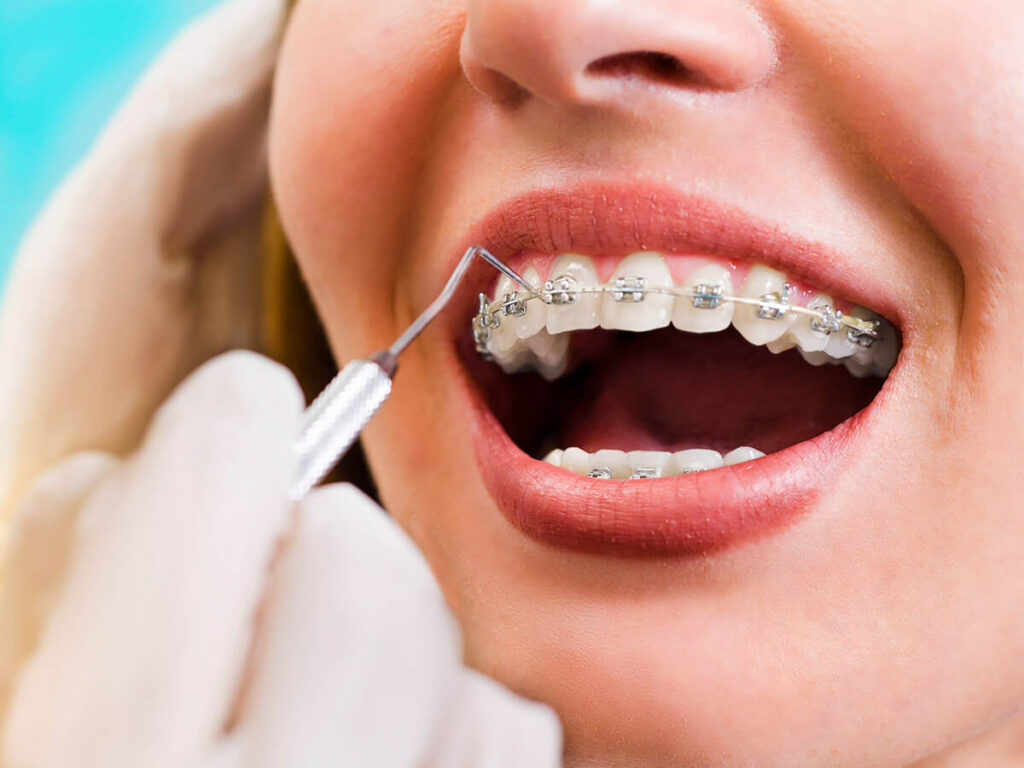Metal Braces
When teeth are severely overcrowded, traditional metal braces are usually recommended because they allow the dentist to have greater control over the movement of the teeth by shifting them in small increments.
Braces in Bartow, FL
All kinds of braces are dental tools that help correct problems with your teeth like crowding, crooked teeth, or misalignment. Metal braces include brackets that are attached to the front of your teeth or bands that fit around each tooth with flexible wires or archwires that hold the bands together.
Some braces also include rubber bands or metal ties that link the brackets to the wire. These bands create more pressure to help straighten and align your teeth.
Sometimes clear brackets and tooth-colored wires can help hide the hardware. Our doctors will help you explore the options and discuss if braces fit your treatment scenario.
While orthodontics can solve many tooth alignment problems, successful treatment relies on good patient compliance. Wearing elastic bands consistently, keeping follow-up appointments for adjustments, and practicing outstanding home care can all help lead to a positive outcome. This commitment involves frequent preventive visits with your hygienist. Our team specializes in helping our orthodontic patients through this process so you can enjoy a gorgeous, healthy smile.
Orthodontics with braces involves teeth straightening and jaw alignment, combining beauty and function. Identifying potential problems as a child may allow for easier treatment, but it’s never too late to discuss ways to enhance a smile.
The staff at Peak Dental in Bartow, FL are braces experts. Schedule a consultation today to find out if this service is right for you.
Schedule Online
-
How do I take care of my braces?
If you have metal dental braces, taking proper care of them is important to ensure they work effectively and avoid complications. Here are a few things to keep in mind:
- Avoid eating chewy or sticky foods, which can get stuck in your braces. If you do eat these foods, cut them into smaller pieces to reduce the risk of them getting stuck.
- Brush and floss your teeth regularly, paying extra attention to the braces and the areas around them. With braces, there are more spaces and crevices for food to get stuck, so keeping your teeth as clean as possible is important.
- Keep up with your regular appointments with your dentist or orthodontist. They will need to adjust and maintain your braces over time to ensure they are working correctly and monitor your progress.
-
What are the different types of braces?
- Metal/traditional braces: Traditional braces are made of metal. They include brackets attached to the front of your teeth, bands that fit around each tooth, and flexible wires or archwires that hold the brackets or bands together. Some braces include rubber bands or metal ties linking the brackets to the wire. These bands create more pressure to help straighten and align your teeth. Sometimes, your orthodontist will have you wear a device called headgear at night. It provides added pressure to help straighten your teeth. You can put it on and take it off.
- Ceramic braces: Traditional brackets are now also made of tooth-colored ceramic, so you don’t notice them as much. They can also be made of stainless steel, clear materials, or gold.
- Lingual braces: The brackets on these braces are attached to the backs of your teeth, facing your tongue. Lingual braces are more rigid to see.
- Clear aligners: You might also hear them called invisible braces. These are clear plastic trays that fit snugly onto your teeth. They use pressure to gently move your teeth into the correct positions and straighten your smile. You remove the aligners to eat, brush, or floss, but you should keep them for at least 22 hours each day for them to work. The orthodontist may also place tooth-colored attachments onto your teeth to hold the aligners in place.
-
How much do braces cost?
The cost of braces and aligners usually depends on the severity of the problem and the treatment options discussed with your dentist. On average, any of these solutions can range from $2,000 to $5,000 or more.
Costs are affected by individual insurance coverage, dental office payment options, etc. So, depending on the extent of your dental needs, it really is a cost unique to you and your family.
More questions?
If you have questions on metal braces, contact our office today.
